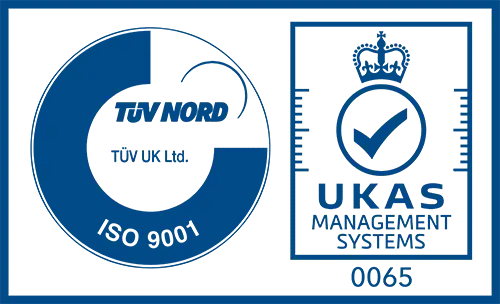This article was written by Richard Halstead, president, Empire Magnetics Inc.
Typically people don’t think about motors or motion control in cryogenic situations, but there are many situations that call for motion at very low temperatures. For example, fuel valves that carry liquefied gases, such as hydrogen and oxygen, for rocket engines must have the ability to not only open and close but also to adjust flow rates at low temperatures. Quality control engineers need to be able to replicate the environment of space in order to ensure that equipment designed for satellites will function reliably before they go into space. Likewise, observatories using supercooled equipment to capture spectral images of stars need scanners and other equipment with sophisticated control systems that, at least in part, operate in cryogenic conditions.
As with all motion control problems, it is necessary to define the basic requirements before it is possible to overlay the environmental items: mass of the load, speed of motion, total travel, acceleration, accuracy of position and velocity control are a few of the questions that must be answered for any motion control application.
For a cryogenic application, there are several additional and crucial questions.
1. What is the range between operating and non-operating temperatures?
Since most of the applications are size and weight constrained, it is important to specify the available parameters to work within. A situation that has the motor operating in normal temperature ranges, but where the unit may be subject to low temperatures when it is not operating, does not mean a standard motor will operate as desired even when it warms up. Metals subject to temperature cycling go through phase changes, and they also stress relieve, both of which result in warping and other dimensional changes. The result can be a failure even though the motor was never turned on. To avoid this situation, it is necessary to rough machine parts, stress relieve them and then machine to the final dimensions. This process is not practical if one starts with a finished motor; instead, each component and each step of the whole construction must be considered in order to be successful.
Since metals become brittle at low temperatures, things we take for granted are not always valid: What is the breaking point of a gear tooth at -250°C? Is the motor torque enough to snap the shaft at the low temperature? In order to account for the loss of strength, the motor or gear designer would typically make the item larger by adding more material. However, weight is an expensive item for space applications, so the challenge is made more complex. Another consideration is that normally flexible items, like springs, become less flexible; in some cases they crack and break instead of bending as expected, or they require much greater force to flex at low temperature.
A major design concern is the difference in material expansion or contraction over the temperature range. For example, copper shrinks at a faster rate than steel. As the temperature goes down, if the motor winding is tightly wrapped as it would normally be, the wire can at some point snap, neck down or simply cut through the insulation to short out to the iron structure, resulting in failure due solely to low temperature.
2. What is the rate of temperature change?
The coefficients of thermal expansion (CTE) are important, but the rate at which thermal transfer occurs impacts the motor as well. An example is the epoxy that bonds the magnets to the rotor. The CTE of the epoxy is different than the two metals, but the rate of thermal transfer is also different so warming the unit too quickly can result in breaking the adhesive bonds that hold the motor together. Typically we limit to a temperature rate of change of 10°C per minute as a maximum.
Another item impacted by the temperature is the bearing type and lubrication. Typical grease used in a vacuum application is not useful for a cryogenic application. Vacuum greases such as Braycote 601 EF (http://2csa.us/castrol), become very stiff around -60°C and are essential solids at -90°C. When you are shooting for -249°C or 24K, it’s clear that this approach won’t work. The alternative is dry film lubrication—molybdenum disulfide is a common dry lube material, but there are several others. While all dry lube materials are not the same, the specific construction of the bearings and the method of application have a greater impact on bearing life than the material selection.
3. Will the unit be in vacuum, or will there be icing?
Most often the motor systems operate in a vacuum. In this case, the level of vacuum needs to be defined and the need for outgassing or particulate control needs to be specified. Having a motor in close proximity to optics on a space-based telescope requires a different level of care than operating a valve on a pipeline.
However, water ice is not the only form of ice. Some gases turn into solids at temperatures that may be above the working temperature of the system. A chamber filled with carbon dioxide will form ice at -56°C, a temperature that is easily achieved if the coolant is liquid nitrogen at -196°C. In addition to simply jamming up the mechanics with solid ice, some materials can cause corrosion or may contaminate other things like the dry lubrications.
4. What is the desired life of the system?
A rocket that has an operating life of 6 seconds requires different technical answers than a space mission with a desired 20-year operating life. It is important to understand that none of the commercial offthe-shelf motors will operate for long under cryogenic conditions—the material selections are wrong, the metals are not stress relieved, and the windings are improperly insulated and will typically outgas. The CTEs of the materials are not compatible, and the guy that designed them was trying to figure out how to save another .001 percent of production cost in order to improve profits.

Things happen at low temperatures that don’t happen at normal temperatures (e.g., a bronze bushing or nut shrinks at a faster rate than stainless steel). At temperatures between -20 and -60°C, a motor-driven assembly may cease to move, and, interestingly, the temperature at which the system freezes is usually highly repeatable. The bronze or brass that started out with a small fraction of an inch of clearance over the shaft or screw shrinks enough to clamp on the steel. For example, I received a call from an engineer in India’s space program who had a satellite in orbit.
Once per revolution around Earth the system stopped working. I asked if this happened when the satellite was in the shadow of the Earth, where it would approach -200°C. Of course, the answer was yes. By saving a few dollars on the motion system, they had a $100 million satellite that only worked half the time. As one might imagine, service calls to satellites are tricky and extremely expensive!

